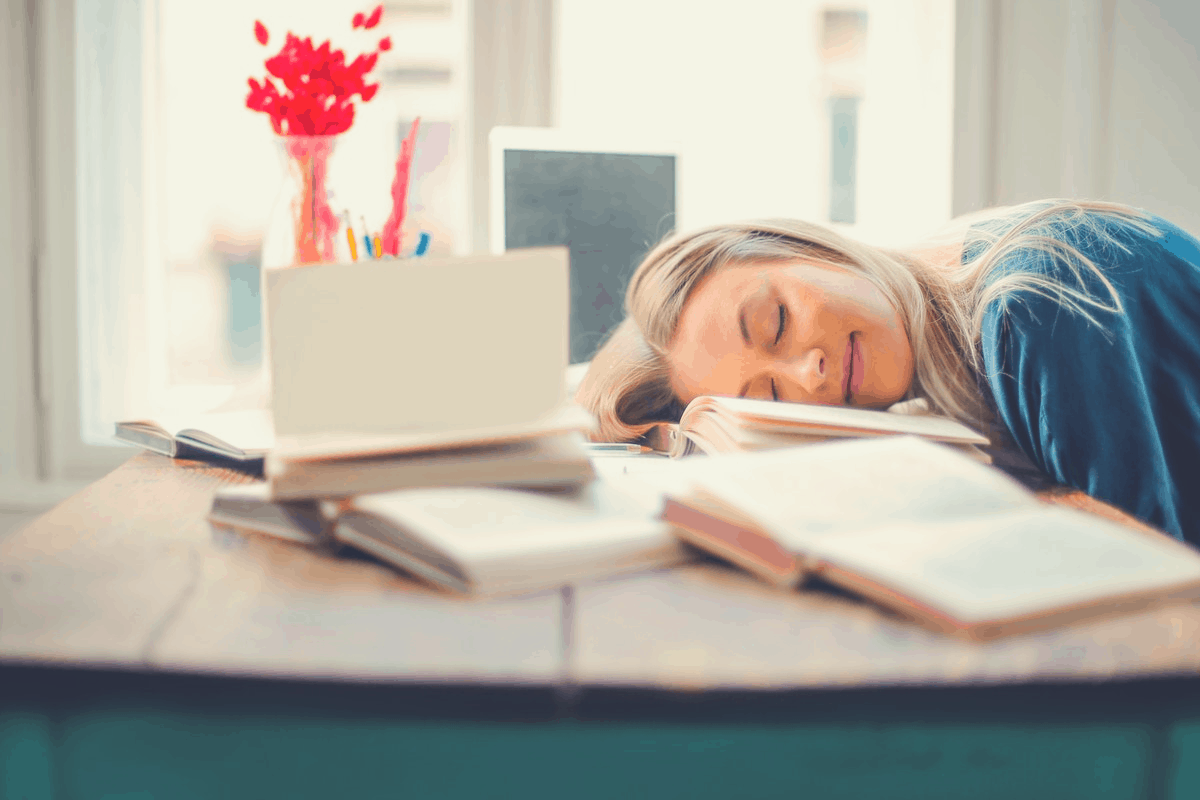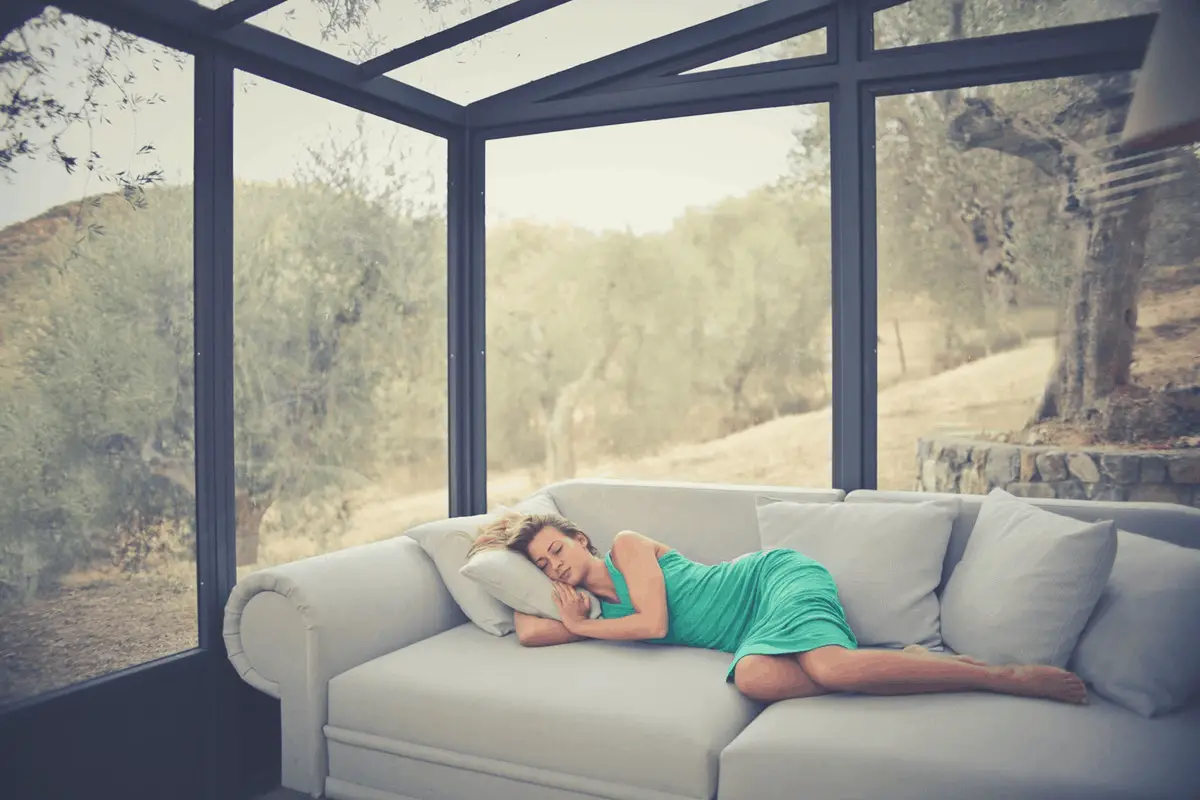Napping and sleeping both mean the same thing right? Well, not exactly. While many of us confuse both types of rest by using the words interchangeably, there are actual differences between them.
Sleeping and napping can be essential to your overall health and productivity levels. This is why it is important to understand what each brings to the table. Sleeping is the long-form of rest you undertake usually at night which may last from 5 to 8 hours. But napping is the short nodding-off that typically occurs anywhere from a couple of minutes to an hour or two.
Napping vs Sleeping
There are many more differences between napping and sleeping apart from the length of time they take. Let us take a look at the others below:
1. Stages of Sleep
The human body undergoes 5 stages of sleep. The first 2 stages require only 20- 30 minutes to achieve. Since power naps typically last 30 minutes or less, they allow you to achieve the first 2 stages of sleep.
Despite the short time frame, these 2 stages can be extremely rewarding especially with regards to energy restoration. This is the reason why many of us feel energized and ready to go after taking power naps in the afternoon.
On the other hand, full-fledged sleeping typically shifts the body through all 5 stages of sleep. This enables cell repair, rejuvenation, and all the other benefits the body requires.
2. Alertness
Have you noticed that it takes some time for you to gain some momentum after waking up in the morning? This is exactly what happens once after enjoying 7-8 hours of sleep. Moving through all 5 stages of sleep can be more rewarding for the body’s overall functionality. But it takes a lot more for you to lose the feeling of grogginess and get your rhythm back.
However, we tend to be more alert after short naps in the afternoon or any time of the day. Most people can jump right back to work after a lunchtime nap in the office.
3. Sleeping Environment

The majority of us have an established sleep routine where we take a cold or warm shower, jump into bed, set up our alarms, and slowly drift off to Slumberland. Many of us even drink something warm such as green tea an hour or so before bedtime.
Thus, we sleep in a more delicate environment such as our bedrooms and any shifts in the surroundings can lead to restlessness and even insomnia.
But napping is quite different in the sense that many of us are forced to do it in the most unfamiliar places. Also, due to the feeling of drowsiness, you may feel the temptation to take a nap even when your surroundings do not necessarily promote that.
This is the reason why some employees nap on the job even at the risk of facing severe sanctions from superiors.
4. Necessity
Regardless of who you are or what you do, sleep is a necessity. You could be working overtime for 12 hours straight or be relaxed throughout the day. Either way, you’ll have to go to bed at some point.
This is thanks to the Circadian Rhythm in humans and other animals that determine our sleeping and feeding patterns.
The body responds to this cycle via specific brain activities, hormone production, cell repair, and other processes that provide stability for the internal clock mechanism. As such, we’re all wired biologically to go to bed at night.
However, except for a few people, napping is usually a response to fatigue and low energy levels. Thus, depending on your lifestyle and workload, you may only need to take naps once in a while.
How Long is a Nap?
Naps are short bouts of rest that typically occur during the day when you’re feeling fatigued or drowsy. There’s no standard duration for naps as your environment and level of drowsiness can play a part in how long it may last. But the majority of naps range from 15 minutes to 2 hours.
Different Types of Naps
There are 3 main types of naps characterized by their duration. Knowing what each type offers to the body can help you make the right decision when you’re feeling drowsy during the day. These types include:
- Caffeine Naps
- Power Naps
- Lifestyle Naps
Caffeine Naps
As the name suggests, this is an ultra-short nap that is taken immediately after drinking a cup of coffee or another beverage that contains high quantities of caffeine. These naps typically last 15 minutes and give the body a head-start before the effects of the caffeine start kicking in.
Since caffeine takes about 30 minutes to have any effects on the body, these naps help you stay alert.
Caffeine naps can be beneficial when feeling drowsy in the course of driving or operating heavy machinery at the workplace.
If you’re mildly sleep-deprived, you should consider this type of nap when you need a quick rush of energy during the day.
Power Naps

Power naps have received a lot of attention in the media in the last decade or so. These are short naps lasting from 20-30 minutes that can reset your focus during the middle of the day. Power naps have become more popular especially in the corporate world as many employees realize their advantages.
These naps can also recharge the brain and give you an immediate bounce in alertness to enable maximum productivity in school or at the office.
No wonder some of the biggest companies in the world such as Uber and Google are incorporating on-site sleeping pods into their offices to promote power naps.
Click here to read the article we wrote on the 21 Epic Ways to Prevent Sleeping at Work. It can be exactly what you need to prevent daytime sleepiness.
Lifestyle Napping
Lifestyle napping is a type of lying down that is undertaken to enable people in certain circumstances to carry out their work. These types of naps can be extremely helpful to pilots and the military who may be forced to stay awake for 24 hours or more during certain situations.
Also known as Polyphasic Sleeping, lifestyle napping can be successful during short-term periods. But practiced over the long-haul, many people start to experience harmful effects as it can disrupt the body’s Circadian Rhythm.
Often, a reversion to a normal sleep routine can counteract any negative side effects from long-term lifestyle napping such as fatigue and lapses in alertness levels.
Why Do I Need a Nap Every day?
Napping can fast catch on with you after engaging in it a couple of times. For some people, everyday naps are critical to their successful functioning.
While napping has been associated with laziness especially in the United States, know that many countries around the world have an afternoon nap culture. Spain, Greece, Italy, Costa Rica, the Philippines, and Mexico are a few of the countries with traditional afternoon nap sessions.
If you need a nap daily, a few of the reasons below could be behind it.
- Insomnia
- Insufficient sleep
- Excessive coffee
- Stressful jobs or School
- Habit
Is a 2-hour Nap Good for You?
The answer is no. Short naps can be effective in boosting your energy levels for those with inadequate sleep. But they are no replacements for deep sleep. If you’re used to a 7-hour sleep cycle at night, for instance, reducing it to 5 hours of nighttime sleep with a complimentary 2-hour afternoon nap can be bad for you.
The truth is full-fledged sleeping in the afternoon puts your body at the risk of sleep inertia – excessive fatigue, grogginess, and confusion that can throw you off your game.
When that happens, any potential benefits from your nap could be easily lost. Additionally, long afternoon naps can disrupt your normal sleep cycle, leading to tossing and turning at bedtime.
Benefits of Napping and Sleep
Napping and long sleeping both offer staggering benefits for the body. Napping gives your brain a quick boost in power to improve focus, concentration, and accuracy. If you’re suffering writer’s block or lack of creativity, a quick nap can also refresh your brain and help you come up with better ideas.
Short 20-30 minute naps also give you superior critical thinking skills when you need to make important decisions in an instant. Besides, they promote better moods while refilling your energy levels and supercharging physical performance.
Full-fledged sleeping, on the other hand, provides all the benefits stated above. However, the effects tend to last longer than short naps. Sleeping also helps your body repair worn-out tissues and offer other critical forms of healing.
Whether you sleep well at night or suffer from insomnia, incorporating naps into your lifestyle can lead to positive results.
When to Choose Naps over Sleeping
The main difference between naps and full-fledged sleeping is the duration. Naps tend to be shorter while sleeping usually requires several hours of bedtime.
Here are a few people and situations where naps are the way to go instead of sleeping.
- Heading out for a late-night
- Athletes with an impending race or game
- Sleep-deprived new moms
- CEOs with stressful overtime schedules
- Shift workers
- Teens
- Frequent international flyers such as pilots and flight attendants
Frequently Asked Questions
Do you have any questions about napping vs sleeping? Chances are, you’ll find the answers below.
Can napping make you gain weight?
The answer is no. Napping might help you lose weight. Insomniacs and restless sleepers tend to eat more due to the high amounts of hunger hormones their bodies produce. Also, staying awake more tends to make you hungry compared to sleeping. This can lead to the consumption of more calories and the resultant weight gain.
Do naps ruin your sleep cycle?
Short naps of about 30 minutes typically do not affect your sleep cycle. However, napping for a couple of hours in the afternoon can make it more difficult to get some shut-eye at bedtime.
Is it better to nap or go to bed early?
It depends on the time of the day. Short naps may be the perfect answer during afternoons when you’re feeling drowsy and unable to focus on work. However, avoid taking naps in the evening as they can deprive you of sleep.
Is a 3-hour nap too long for a baby?
The answer is yes. According to experts, 2 hours is the maximum time you should allow your baby to nap to prevent sleeping difficulties at bedtime.
Do naps count towards the hours of sleep?
Naps do not count towards hours of sleep as they’re meant to be shorter to provide quick bursts of energy.
Conclusion
Sleeping and napping can both improve your functionality but they’re not the same. This is why knowing their differences can be critical.
Also, it is important to know when to choose which for maximum benefits especially if you want to achieve higher levels of productivity. Unless you work a night shift, always try to sleep at night and take short power naps during the day for maximum productivity.
